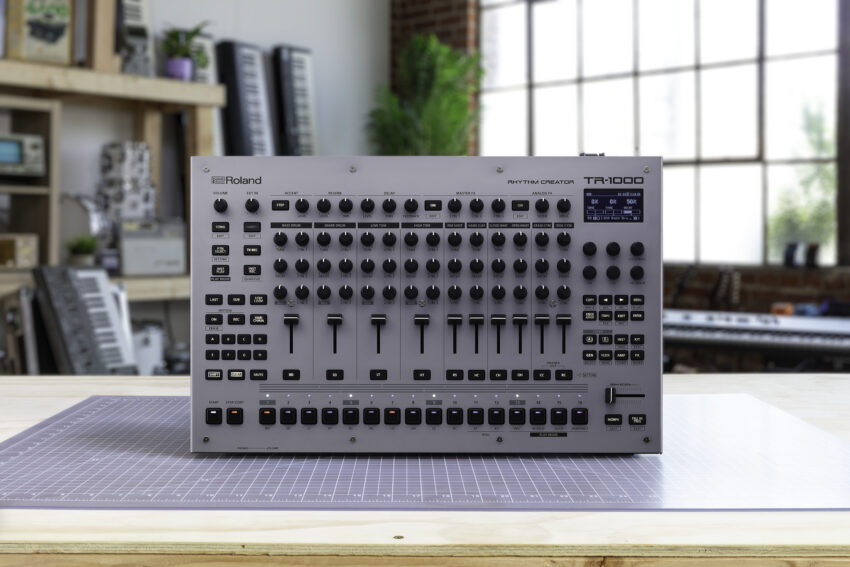
roland s tr-1000 is its first analog Roland has unveiled the TR-1000 Rhythm Generator, marking its first foray into analog drum machines in over four decades.
roland s tr-1000 is its first analog
Introduction to the TR-1000
Roland, a name synonymous with innovation in the music technology space, has largely refrained from participating in the analog synth renaissance that has captivated musicians and producers over the last decade. However, the company is now making a significant return to its roots with the launch of the TR-1000 Rhythm Generator. This new instrument represents a departure from previous offerings that leaned heavily on digital technologies, such as the Zen-Core engine and Analogue Circuit Behavior (ACB) modeling.
Unlike its recent digital counterparts, the TR-1000 embraces the authentic analog sound that has made Roland’s iconic machines, like the TR-808 and TR-909, legendary in the music industry. This new drum machine not only pays homage to its predecessors but also integrates modern features that cater to contemporary music production needs.
Features of the TR-1000
Analog Sound Circuits
The TR-1000 distinguishes itself by recreating 16 analog sound circuits derived from the TR-808 and TR-909. This is a significant feature, as it allows musicians to access the rich, warm tones that have defined countless tracks across various genres, from hip-hop to electronic dance music. The inclusion of these analog circuits is a testament to Roland’s commitment to delivering authentic sound quality.
Modern Sound-Shaping Capabilities
In addition to its analog roots, the TR-1000 incorporates a range of modern sound-shaping tools. It combines the classic analog voices with digital ACB sound, FM percussion, and PCM samples. This blend of old and new technologies enables users to create a diverse array of percussive sounds, expanding the sonic palette available to them.
Sampling Tools
The TR-1000 also features extensive sampling tools that allow for time-stretching loops and chopping up drum breaks. This functionality is crucial for modern producers who often rely on samples to create unique sounds and rhythms. The ability to manipulate samples in real-time adds a layer of flexibility that is essential in today’s fast-paced music production environment.
Design and Usability
Physical Interface
One of the standout aspects of the TR-1000 is its physical design. The machine features a plethora of knobs, buttons, and faders on the front panel, which suggests that it will require less navigation through complex menus compared to many modern Roland instruments. This design choice is particularly appealing to musicians who prefer a tactile approach to sound creation, allowing for immediate adjustments and real-time performance.
Analog Filter and Drive Section
Further enhancing its analog capabilities, the TR-1000 includes a stereo analog filter and drive section. This addition allows users to add grit and character to their sounds, creating buildups and transitions that are essential for dynamic music production. The analog filter can shape the tone of the sounds in a way that digital filters often cannot, providing a warmth and depth that is highly sought after in music production.
Price Point and Market Positioning
The TR-1000 comes with a price tag of $2,699.99, positioning it as a premium product in the market. This price point may deter casual hobbyists, but it is worth noting that it is approximately half the cost of a functioning TR-808 or TR-909 on the vintage market. For serious musicians and producers, the TR-1000 could be seen as a worthwhile investment, offering the classic Roland sound without the exorbitant price of vintage models.
Implications for Musicians and Producers
The introduction of the TR-1000 has several implications for musicians and producers. First and foremost, it provides an accessible option for those who have long desired the authentic sound of Roland’s classic drum machines but have been priced out of the vintage market. The TR-1000 offers a modern alternative that retains the essence of its predecessors while incorporating contemporary features.
Impact on Music Genres
Given the TR-1000’s ability to recreate iconic sounds, it is likely to have a significant impact on various music genres. Hip-hop, electronic, and pop producers may find themselves drawn to the machine for its authentic analog tones and modern capabilities. The TR-1000 could potentially inspire a new wave of music that pays homage to the sounds of the past while pushing creative boundaries.
Community and Collaboration
Moreover, the TR-1000 is likely to foster a sense of community among musicians who appreciate analog sound. As more producers adopt this machine, it may lead to collaborations and shared techniques that further enrich the music-making process. The tactile nature of the TR-1000 encourages hands-on experimentation, which can lead to innovative sound design and new musical ideas.
Reactions from the Industry
The announcement of the TR-1000 has garnered attention from various stakeholders in the music technology industry. Musicians, producers, and sound designers have expressed excitement about the return to analog sound, viewing it as a validation of the ongoing interest in vintage equipment. The TR-1000’s blend of classic and modern features has been praised for its potential to bridge the gap between traditional and contemporary music production techniques.
Critiques and Concerns
However, some industry experts have raised concerns about the price point. While the TR-1000 is more affordable than vintage models, it still represents a significant investment for many musicians. Critics argue that Roland must ensure that the machine delivers exceptional sound quality and reliability to justify its cost. Additionally, there is a concern that the market may become saturated with similar products, making it challenging for the TR-1000 to stand out.
Conclusion
The Roland TR-1000 Rhythm Generator marks a significant milestone in the company’s history, representing its first analog drum machine in over 40 years. By embracing the authentic sound of its classic machines while incorporating modern features, Roland has created a product that appeals to both nostalgic musicians and contemporary producers. While the price point may be a barrier for some, the TR-1000 offers a compelling alternative to vintage models, making it a noteworthy addition to the music technology landscape.
Source: Original report
Was this helpful?
Last Modified: October 1, 2025 at 12:36 pm
14 views














